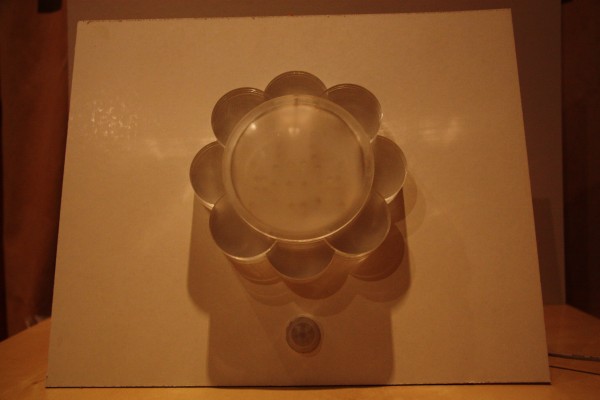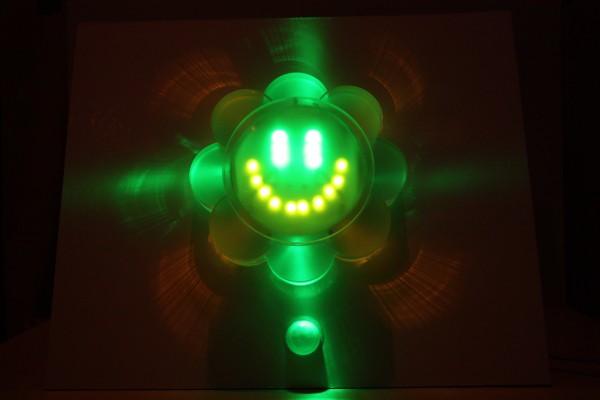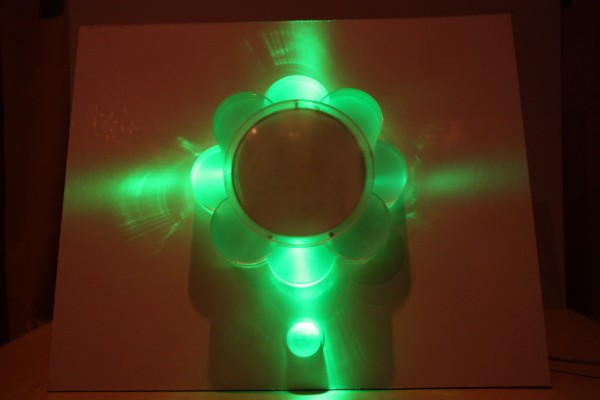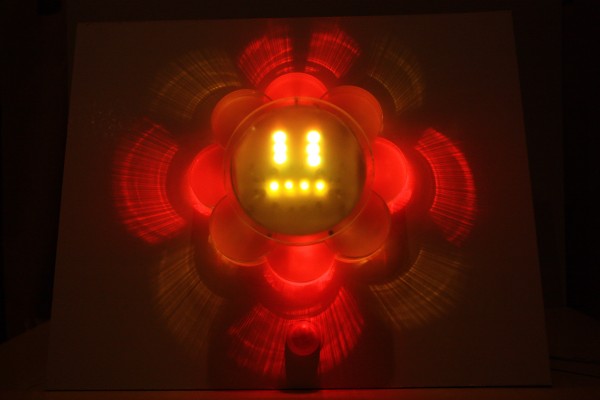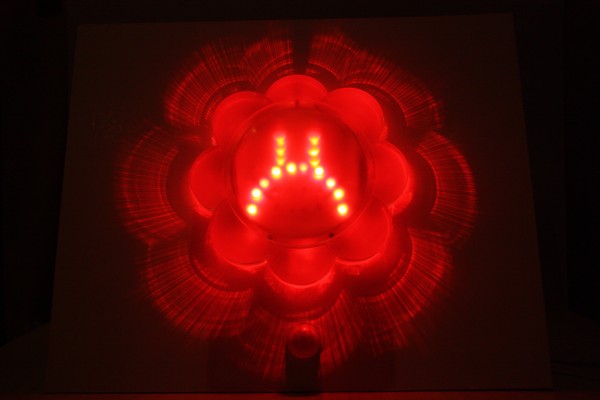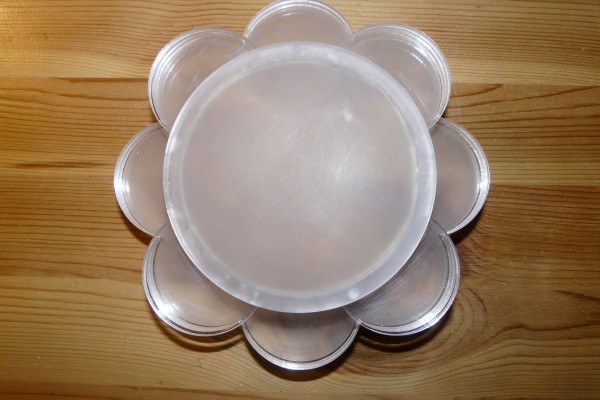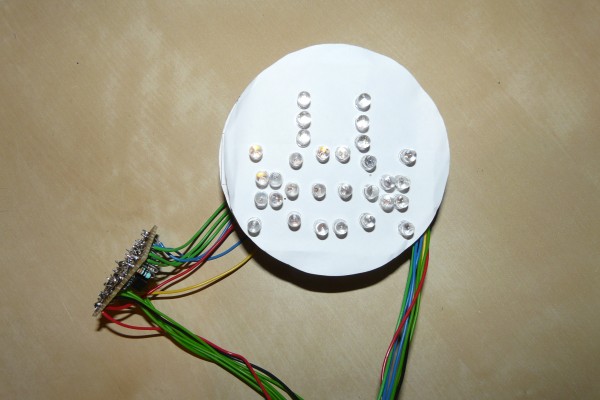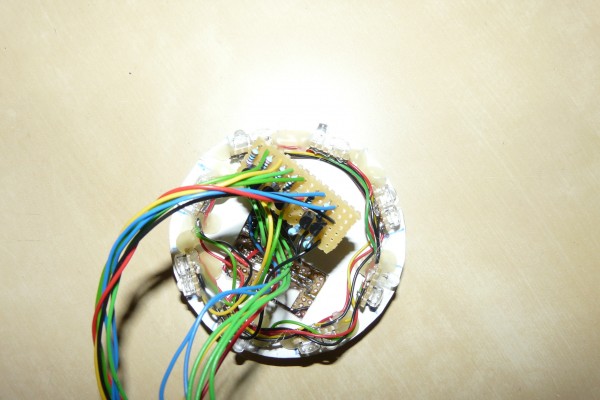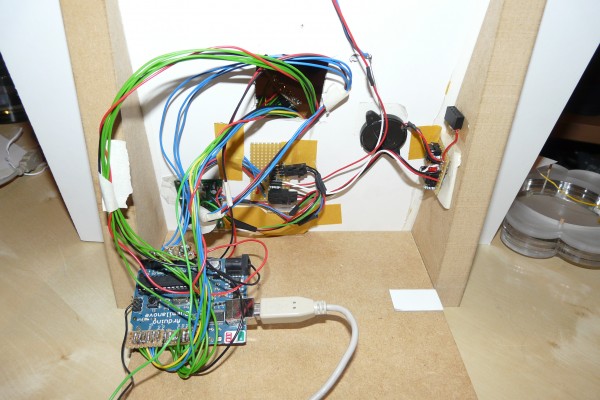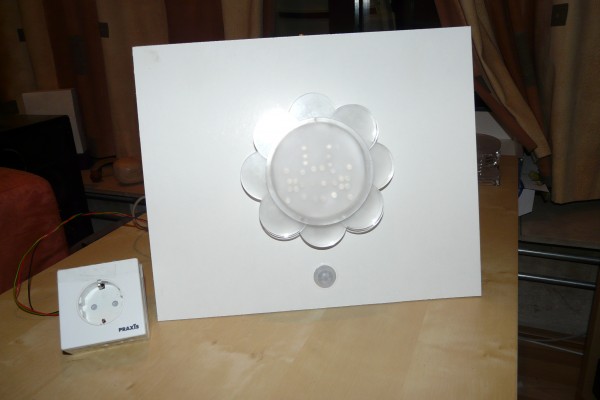Project Type: Bachelor Project
Project Year: 2011
Project Duration: 1 semester
Project Client: TU/e
Project Team: Individual Project
Project Focus
- Concept development
- Prototyping
- User Testing
- Electronics
- Programming
 During this project I worked on the Light-E; a light switch that aims to provide children with feedback about their energy consumption.
During this project I worked on the Light-E; a light switch that aims to provide children with feedback about their energy consumption.
Often, lights are left on while there is no need for them to be turned on; when either nobody is present in the room or when light conditions are so that no artificial lighting is needed. Especially young children do not think about turning of the light when leaving their room wasting precious energy.
The Light-E is a playful light switch that gives children feedback about their ‘light-consumption’ The idea is the Light-E would replace the normal light switch and children could simply gently touch it in order to turn on the light. As soon as the child touches the Light-E it will check the current lighting conditions via a ambient light sensor to check whterer there is an actual need for the light to be turned on. If so, it will turn on the light and light up with a green smile. However, if it ‘sees’ there is already more than enough daylight available it will still turn on the light bu light up with an orange frowny face, indicating it is not happy about the child turning on the light when there is no need for it and stimulating it to turn it off.
Besides the Light-E’s ability to measure ambient lighting conditions it also has a motion sensor to detect room occupancy. If the light is left on for extended periods of time while no one is present in the room over time the happy smiling Light-E will gradually turn to a frowning and eventually sad red glowing face. It will then turn off the light automatically to save the precious energy, but will still show a sad face until the child has been in the room again and touched the Light-E to turn the light on again. By this it will provide the child with a clear cue that it is not happy about something, stimulating it to think why this might be.
The Light-E was user-tested on a primary school and children did indeed understand the connection between energy spilling and the Light-E showing a sad face.
Project Description
During this project I worked on the Light-E; a light switch that aims to provide children with feedback about their energy consumption.
Often, lights are left on while there is no need for them to be turned on; when either nobody is present in the room or when light conditions are so that no artificial lighting is needed. Especially young children do not think about turning of the light when leaving their room wasting precious energy.
The Light-E is a playful light switch that gives children feedback about their ‘light-consumption’ The idea is the Light-E would replace the normal light switch and children could simply gently touch it in order to turn on the light. As soon as the child touches the Light-E it will check the current lighting conditions via a ambient light sensor to check whterer there is an actual need for the light to be turned on. If so, it will turn on the light and light up with a green smile. However, if it ‘sees’ there is already more than enough daylight available it will still turn on the light bu light up with an orange frowny face, indicating it is not happy about the child turning on the light when there is no need for it and stimulating it to turn it off.
Besides the Light-E’s ability to measure ambient lighting conditions it also has a motion sensor to detect room occupancy. If the light is left on for extended periods of time while no one is present in the room over time the happy smiling Light-E will gradually turn to a frowning and eventually sad red glowing face. It will then turn off the light automatically to save the precious energy, but will still show a sad face until the child has been in the room again and touched the Light-E to turn the light on again. By this it will provide the child with a clear cue that it is not happy about something, stimulating it to think why this might be.
The Light-E was user-tested on a primary school and children did indeed understand the connection between energy spilling and the Light-E showing a sad face.
Project Info
Project Type: Bachelor Project
Project Year: 2011
Project Duration: 1 semester
Project Client: TU/e
Project Team: Individual Project
Project Focus
- Concept development
- Prototyping
- User Testing
- Electronics
- Programming
